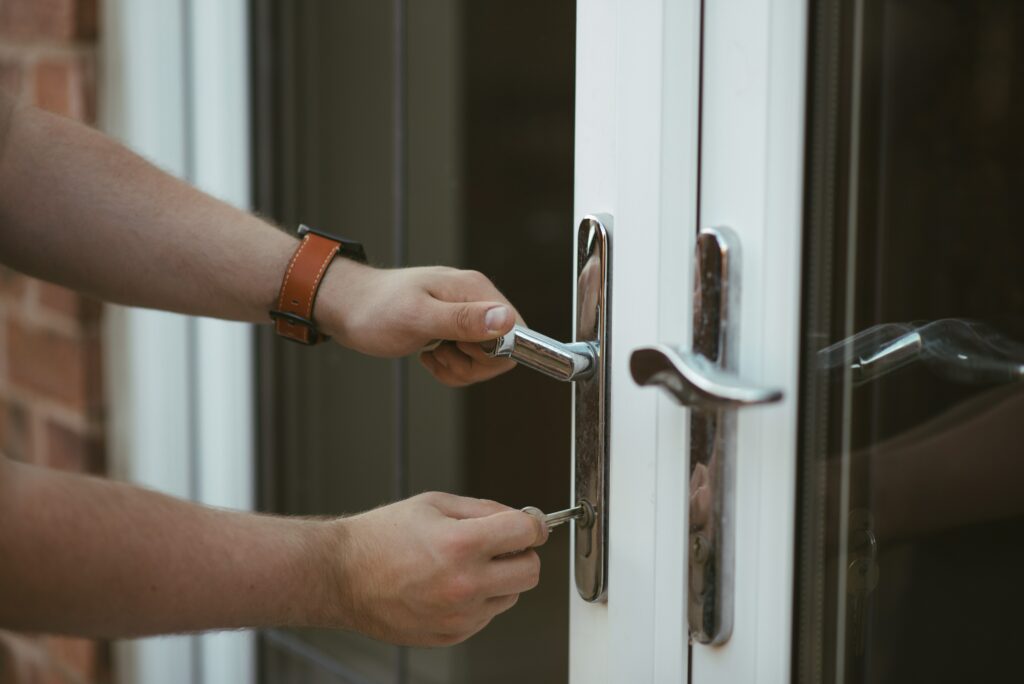Home insurance is essential to maintaining the safety of your property. But the variance in monthly costs can skew depending on the security and fortification of your home.
However, you can effectively lower your monthly insurance costs yourself with these 7 home improvements.
1. Install an alarm system
One of the most effective and efficient ways to prevent burglary and all unauthorized entry into your property is to install an alarm system. A favourite among home insurance providers, an alarm system is a powerful deterrent to intruders.
Optional improvements to your alarm system can include the following:
- addition of security cameras
- installation of motion-activated floodlighting
- doorbell activated notifications
Alarm systems as a product are improving frequently — particularly with app-linked notification systems that provide real-time updates. Upgrading your system with these newer benefits is always an option.
2. Deadbolt your locks
Deadbolting your locks significantly reduces the likelihood of any unauthorized entry.
Install these tough locks in your house, garage, shed, or entrances that connect these structures together. In all cases, deadbolts are a relatively inexpensive way to secure your property even more.
3. Add (even more) smoke detectors
Whether it be from cooking, overheating electrical sockets, or carelessness with candles, house fires can be devastating. Installing smoke detectors greatly increases the odds that you can catch a fire before it gets out of control. At the very least, they will also help you exit the property safely.
Place detectors in all the areas:
- every bedroom
- outside of all sleeping areas
- living room/family area
- at the foot of staircases
- at least 10 feet from cooking appliances (to stop false alarms)
- on all levels including basement and attic
4. Update your electrical wiring
Updating your electrical wiring may not be necessary if you live in a modern building constructed within the last few decades. However, older properties might have wiring that’s worn or incapable of supporting modern electricity usage, which can lead to significant house risks.
Consider contacting an electrician for consultation and assessment of your property and wiring quality.
5. Install a sump pump
If you own a basement and live in an area prone to flooding, your entire property is at risk of extensive water damage and mold. Alongside other flood defences, a sump pump is a great option to protect your home from different types of water damage.
It helps remove excess volumes of water pumped away from your property during flooding events. This will reduce your risk of water damage and can potentially lead to lower home insurance costs.
Although they come with an additional cost, adding additional water coverages options to your home insurance plan can also save you hundreds of dollars in the long run.
6. Upgrade your windows so they’re shatterproof
Shatterproof windows may function as deterrents to intruders. But they also provide further fortification when confronted by adverse weather.
This is especially important for those who live in areas that are prone to hurricanes, tornadoes, or any kind of weather that leaves windows vulnerable. Shatterproof windows also help with insulation and soundproofing your home.
7. Replace your roof
A quality roof is imperative to preventing flooding and subsequent water damage during rainy seasons, hurricanes, or the melting of built-up snow. Weak or damaged roofs allow water to leak in during these events. Even small leaks can significantly damage walls and weaken the interior structure.
If you have an older roof, consider assessing your roof and calling a professional to perform an assessment if needed. Even just a few smaller repairs and weathering techniques are effective methods of fortification. These can make a difference to home insurance costs.
Small Changes for Potentially Big Savings
These installations may lower your premiums, but they’ll also provide an immediate, tangible improvement to the safety and fortification of your property.
The costs and time commitment of these projects may vary. Make sure to prioritize the improvements that best suit your budget, your environment, your lifestyle, and property.
